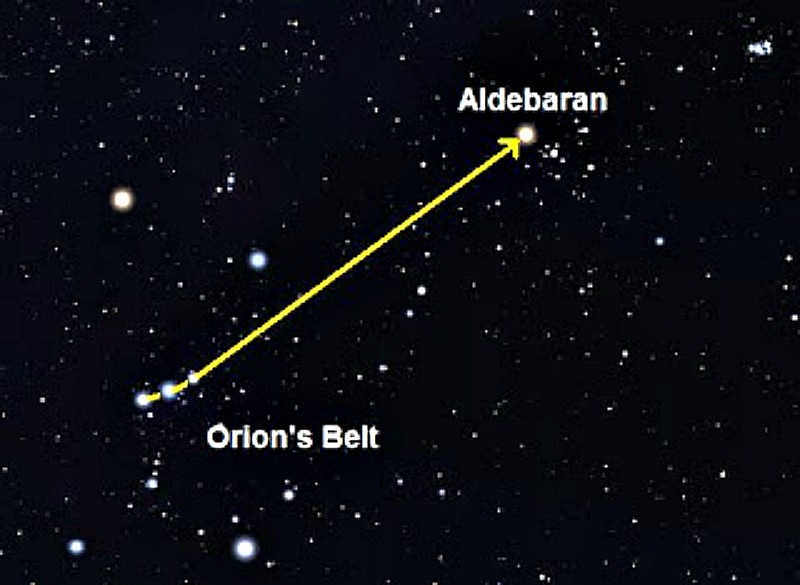On February 22 and 23, 2018, let the moon show you where the constellation Taurus the Bull resides on the great dome of sky. Taurus is a big constellation, and the moon travels in front of it for several days each month. By the night of February 24, as seen from North America, the moon still appears near Taurus’ stars, even though it’s officially crossed a constellation border into Orion.
The wide waxing crescent (almost first quarter) moon might make it somewhat difficult to see the faintest stars in Taurus on these nights. But you should still be able to see the Bull’s two most prominent features: the bright star Aldebaran in the V-shaped Hyades stara cluster, and the tiny dipper-shaped Pleiades star cluster.
EarthSky Facebook friend Eileen Claffey in Brookline, Massachusetts captured this photo of the moon near the V-shaped Hyades star cluster and tiny dipper-shaped Pleiades star cluster on March 6, 2014.
If can’t see any stars near the moon, it could be your surroundings are too lit up. Try standing in the shadow of a building. Also, try placing your finger over the moon for a better view.
The half-lit first quarter moon will come on February 23, 2018. The exact time of first quarter moon is 8:09 UTC; translate UTC to your time. Converting Universal Time to the local times at North American and U.S. time zones, the exact first quarter moon comes at 4:09 a.m. AST, 3:09 a.m. EST, 2:09 a.m. CST, 1:09 a.m. MST, 12:09 a.m. PST – and on February 22, at 11:09 p.m. AKST and 10:09 p.m. HST. A first quarter moon rises around noon and sets around midnight, as seen from around the globe. Click here, checking the moon phases and the moonrise and moonset boxes, to find out exactly when the moon sets in your sky.
Once the moon drops out of the evening sky toward the end of the first week of March, you can see the Bull in all his starlit majesty, assuming you have a dark, country sky. Many people are familiar with the constellation Orion and the compact line of three stars known as Orion’s Belt. Orion’s Belt always points in the direction of the bright reddish star Aldebaran, brightest star in Taurus the Bull.

When the moon is no longer there to guide you, star-hop via the three medium-bright stars of Orion’s Belt to reddish Aldebaran. Image via SolarEmpireUK
Bottom line: On February 22 and 23, 2018, let the moon show you the way to Taurus the Bull. On February 24, as seen from North America, the moon has crossed a constellation boundary into Orion.
from EarthSky http://ift.tt/2ELU9aY
On February 22 and 23, 2018, let the moon show you where the constellation Taurus the Bull resides on the great dome of sky. Taurus is a big constellation, and the moon travels in front of it for several days each month. By the night of February 24, as seen from North America, the moon still appears near Taurus’ stars, even though it’s officially crossed a constellation border into Orion.
The wide waxing crescent (almost first quarter) moon might make it somewhat difficult to see the faintest stars in Taurus on these nights. But you should still be able to see the Bull’s two most prominent features: the bright star Aldebaran in the V-shaped Hyades stara cluster, and the tiny dipper-shaped Pleiades star cluster.
EarthSky Facebook friend Eileen Claffey in Brookline, Massachusetts captured this photo of the moon near the V-shaped Hyades star cluster and tiny dipper-shaped Pleiades star cluster on March 6, 2014.
If can’t see any stars near the moon, it could be your surroundings are too lit up. Try standing in the shadow of a building. Also, try placing your finger over the moon for a better view.
The half-lit first quarter moon will come on February 23, 2018. The exact time of first quarter moon is 8:09 UTC; translate UTC to your time. Converting Universal Time to the local times at North American and U.S. time zones, the exact first quarter moon comes at 4:09 a.m. AST, 3:09 a.m. EST, 2:09 a.m. CST, 1:09 a.m. MST, 12:09 a.m. PST – and on February 22, at 11:09 p.m. AKST and 10:09 p.m. HST. A first quarter moon rises around noon and sets around midnight, as seen from around the globe. Click here, checking the moon phases and the moonrise and moonset boxes, to find out exactly when the moon sets in your sky.
Once the moon drops out of the evening sky toward the end of the first week of March, you can see the Bull in all his starlit majesty, assuming you have a dark, country sky. Many people are familiar with the constellation Orion and the compact line of three stars known as Orion’s Belt. Orion’s Belt always points in the direction of the bright reddish star Aldebaran, brightest star in Taurus the Bull.

When the moon is no longer there to guide you, star-hop via the three medium-bright stars of Orion’s Belt to reddish Aldebaran. Image via SolarEmpireUK
Bottom line: On February 22 and 23, 2018, let the moon show you the way to Taurus the Bull. On February 24, as seen from North America, the moon has crossed a constellation boundary into Orion.
from EarthSky http://ift.tt/2ELU9aY

Aucun commentaire:
Enregistrer un commentaire